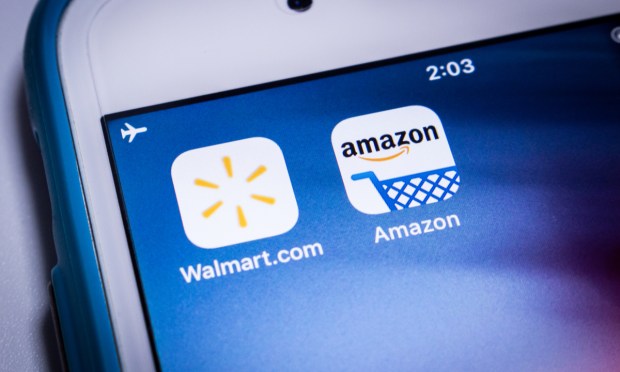
This week, eCommerce giant Amazon rolled out a new slew of artificial intelligence (AI) tools, giving brands and retailers a chance to upgrade their customer experiences without breaking the bank. Mega retailer Walmart, on the other hand, is hoping to draw more shoppers with a new blockbuster debut.
Despite these varying strategies, Amazon and Walmart have a common goal: ringing up more conversions.
Here’s how each company is attempting to do so:
Earlier this week, Amazon Web Services (AWS) unveiled five tools powered by generative artificial intelligence (AI). Four of these tools are built to help retailers amp up customer experiences on a budget, while the fifth tool assists supply chain operators with carrying out their tasks.
In an effort to enhance companies’ ability to provide superior customer experiences, AWS has also incorporated four generative AI features into its cloud contact center, Amazon Connect.
As PYMNTS reported on Tuesday (Nov. 28), Amazon Q in Connect furnishes customer service agents with instant responses and suggested actions, while Amazon Connect Contact Lens offers managers summaries of customer conversations.
Amazon Lex in Amazon Connect helps contact center administrators create chatbots and interactive voice response (IVRs), and Amazon Connect Customer Profiles facilitate the delivery of personalized customer experiences by consolidating customer data from popular software-as-a-service (SaaS) applications.
“With just a few clicks, contact center leaders can leverage new capabilities powered by generative AI in Amazon Connect to enhance the more than 15 million customer interactions handled on Amazon Connect every day,” said Pasquale DeMaio, vice president, Amazon Connect, AWS Applications, said in a release.
In support of supply chain professionals in their tasks, AWS has introduced Amazon Q in AWS Supply Chain, a generative AI assistant capable of summarizing key risks and visualizing “what if” scenarios to optimize supply chain decisions.
In conjunction with this generative AI assistant, AWS has incorporated additional AWS Supply Chain features aimed at aiding in forecasting and planning purchases, publishing forecasts and confirming orders, as well as requesting and collecting compliance data from suppliers.
More here: Amazon Unveils 5 Generative AI-Powered Tools
Walmart has embarked on its latest exploration of shoppable videos, collaborating with TikTok and Roku to introduce its inaugural shoppable series.
Adhering to the classic Hallmark holiday movie formula — where a professional woman discovers love during Christmastime upon returning to her hometown — the 23-part series “Add to Heart” aims to engage consumers with storytelling while also providing an opportunity to purchase the products featured on screen.
“The shoppable series follows New York designer Jessica as she returns to her hometown for the holidays,” Walmart said in a press release. “After losing her luggage on her travels, she visits her local Walmart, where she bumps into an old flame Javi. Between the town festivities, decorating and shopping, they start to rekindle their spark. How will it end? What will you shop? Tune in to find out how the story unfolds.”
As stated in the series trailer, “it’s not a romcom, it’s RomCommerce.”
The shoppable series is set to premiere on TikTok, Roku and YouTube, as well as on Walmart’s social channels, starting on Dec. 2, with the remaining episodes launching on Dec. 5 and Dec. 8.
See also: Walmart Embraces ‘RomCommerce’ to Expand Shoppable TV Offering
This initiative comes on the heels of Walmart’s recent partnership with NBCUniversal’s streaming platform Peacock for another shoppable TV experience.
“Below Deck Mediterranean,” a reality series centered around the crew of a super-yacht, lets viewers purchase products inspired by the show during designated “shoppable episodes.”
“When customers find something they love during an ad break, they can simply press arrows on the remote to browse the interactive onscreen product carousel and scan a QR code to easily checkout on Walmart.com,” Walmart said at the time of the announcement.
That said, both of these initiatives aim to capture the attention of the 70% of shoppers who indicated that advertisements, influencers and media significantly influenced their holiday purchasing decisions, as found recently by PYMNTS Intelligence.
Conversely, 28% of consumers stated that media had no influence on their purchasing decisions, per the study.
Meanwhile, a third of shoppers recognized the impact of website advertising, with 17% considering it the primary factor guiding their Black Friday purchases. TV advertising closely trailed behind, influencing 31% of consumers, with 17% of this segment identifying it as the primary influence.
Read more: From Slump to Surge, Ads and Influencers Revive Black Friday